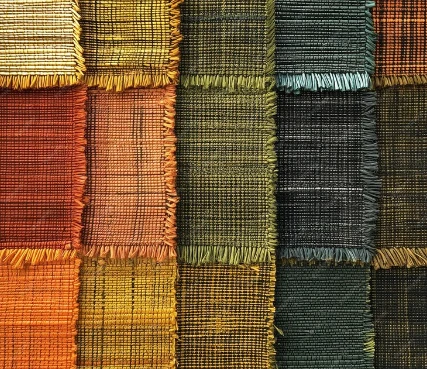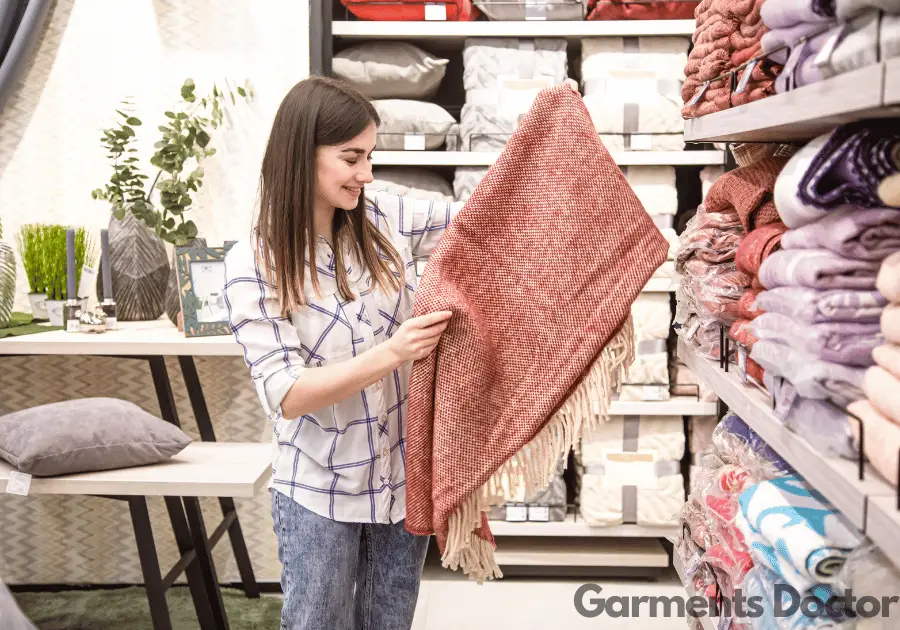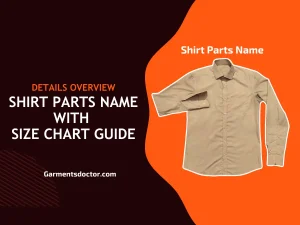Different types of woven fabric are fundamental to the textile industry, creating everything from clothing to home furnishings. Their durability and structure come from the tightness of the weave, which can range from lightweight and airy to dense and sturdy.
What Is Woven Fabric?
Woven fabric is a textile formed by weaving, the process of intertwining two sets of yarns or threads at right angles to each other. This method creates a strong and durable material in a variety of textures, weights, and strengths.

Basic Characteristics Of Woven Fabric
- Durability: Woven fabrics are strong and hold shapes well.
- Versatility: They suit various applications, from clothing to furnishings.
- Texture: The weaving process creates different textures.
How To Made Woven Fabric
Woven fabrics are a staple in our wardrobes, homes, and daily lives, yet the complexity and beauty of their creation often remain a mystery to many. Let’s unravel the fascinating process behind how woven fabric is made, illuminating each step from yarn to finished textile.
The Weaving Process
- Warping: Preparing the warp threads on the loom. This step involves aligning the threads in a specific order and tension, setting the foundation for the fabric’s structure.
- Shedding: Creating a space between the warp threads. This gap, known as the shed, is where the weft thread will pass through.
- Picking: Introducing the weft thread through the shed. This action is typically performed with a shuttle, which carries the weft thread across the loom.
- Beating-up: Compacting the weft thread against the formed fabric. This is done using the loom’s reed, ensuring a tight and even weave.
What are the Different Types of Woven Fabric?
Let’s dive into the Types of Woven Fabric. Each type has unique features. These materials are popular for their quality and use in various products.
Twill Weaves
- Diagonal Lines: Twill weaves are easily recognized by their diagonal rib patterns. This texture is the result of offsetting the weft threads over the warp threads, creating a sturdy fabric that drapes well.
- Variety of Weights: Ranging from light to heavy, twill fabrics include the likes of denim and gabardine. Their unique weave allows for flexibility across different applications, from durable jeans to dapper jackets.
Satin Weaves
The luxurious feel of satin weaves is no accident. This fabric is woven in a way that allows either the warp or the weft to dominate the surface, resulting in a glossy, smooth finish. Often reserved for evening wear and decorative textiles, satin’s elegant sheen is synonymous with opulence and comfort.
Jacquard Weaves
- Intricate Patterns: With jacquard weaves, complexity is woven into its very fibers. This technique allows for elaborate designs, far beyond the capabilities of basic weaving methods.
- Brocades and Damasks: These two are prime examples of jacquard fabrics, often showcasing floral or geometric patterns that add depth and texture to the material. Their richness in design makes them a popular choice for upholstery and formal attire.
Dobby Weaves
Dobby weaves bring a hint of texture and pattern to the table without the complexity of jacquard. With a dobby loom, small geometric patterns come to life, giving the fabric a more tactile and visually engaging presence. Think of the subtle dots on a dress shirt or the tiny waffle-like squares on a cozy bathrobe.
Basket Weaves
- Interlaced Threads: Basket weaves mimic the crisscross pattern of their namesake, where groups of warp and weft threads interlace to form a checkerboard effect.
- Breathability and Flexibility: This loose structure makes for a breathable fabric, ideal for warm-weather clothing and casual wear. It’s a perfect blend of function and laid-back style
Leno Weaves
Crafted with a unique twist, leno weaves lock pairs of warp threads around the weft, creating a stable yet sheer fabric. This method is often used in the making of lightweight curtains and delicate scarves, where airflow and a touch of transparency are desired.
Herringbone Weaves
- Distinctive V-Pattern: Herringbone weaves are a variation of twill that forms a zigzag pattern resembling the bones of a herringfish. This elegant detail adds a classic touch to apparel and home textiles.
- Visual Interest and Drape: The herringbone pattern not only catches the eye but also allows the fabric to drape gracefully, making it a sought-after choice for suits and outerwear.
Common Uses Of Woven Fabric
Woven fabrics have a vast array of applications, each benefitting from the inherent properties of this type of material:
- Clothing & Apparel: From delicate silks to sturdy types of denim, woven fabrics are a staple in clothing due to their adaptability and comfort.
- Home Furnishings: Drapes, upholstery, and bed linens often rely on the strength and aesthetic appeal of woven textiles.
- Industrial Products: Woven fabrics serve in various industrial goods, such as filters and conveyor belts, thanks to their resilient nature.
How To Choose The Right Woven Fabric
Selecting the right woven fabric hinges and its uses and characteristics. Consider the material’s weight, durability, and drape for your project’s needs, and explore options like cotton, linen, or silk for specific applications.
Here’s a guide to help you make an informed decision:
- Fabric Purpose
- Fabric Types
- Fabric Composition
- Fabric Weight and Thickness
- Color And Pattern
- Fabric Care And Maintenance
- Feel and Appearance
Selecting the right woven fabric is a delightful challenge that combines art and science. By considering these factors, you’re well on your way to making an informed choice that will bring your creative vision to life with both beauty and functionality.
Conclusion
The diverse world of woven fabrics reveals a spectrum from delicate chiffons to sturdy twills. Each type offers unique characteristics, ensuring a perfect match for every textile need and fashion trend.
Read More:
What Is Knit Fabric: Different Types of Knit Fabric
What is Denim Fabric: Different Types of Denim Fabric
What Is Cotton Fabric: Different Types Of Cotton Fabric
Frequently Asked Questions
What Are Woven Fabrics?
Woven fabrics are textiles formed by weaving, which is the interlacing of longitudinal threads (the warp) with lateral threads (the weft). This process creates a strong, durable fabric used in various applications like clothing, upholstery, and linens.
How Is Cotton Woven Fabric Made?
Cotton woven fabric is made by interlacing cotton yarns on a loom. The warp threads are held taut while the weft threads are woven over and under them. This creates a sturdy fabric suitable for everyday wear and household items.
What Are Common Types Of Woven Fabrics?
Common types of woven fabrics include cotton, denim, flannel, and silk. Each type varies in texture and use, from lightweight cotton for shirts to heavier denim for jeans.
How To Identify Quality In Woven Fabrics?
To identify quality in woven fabrics, look for evenness in the weave, no gaps or skips in threads, and a smooth finish. High thread count often indicates a finer, stronger fabric.
How Is Woven Fabric Different From Knitted?
Woven fabric is structured with intersecting threads, which makes it less stretchy and more stable than knitted fabric. Knitted fabric, on the other hand, consists of loops of yarn, giving it more elasticity.



